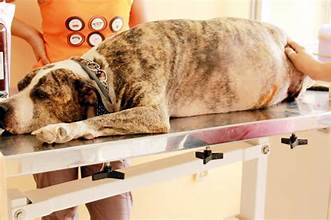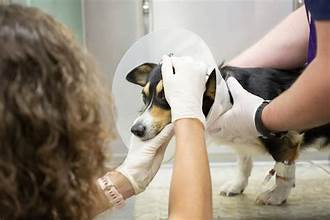Are you considering taking a responsible step for your furry friend by getting them ‘fixed’?
Spaying and neutering are standard procedures for dogs, and for good reason.
Making this decision empowers you to take control of your dog’s health and the broader community.
Let’s explore the reasons why spaying and neutering are essential.
Health Benefits for Your Dog
Spaying and neutering isn’t just about preventing unwanted litters. It offers a whole pawful of advantages for your dog’s health and well-being:

Reduced Risk of Serious Medical Conditions:
Spaying females stops the risk of uterine infections and pyometra, a life-threatening condition. Neutering males reduces testicular cancer and some prostate problems.
However, it’s important to note that spaying or neutering carries some risks, such as anesthesia complications and post-operative infections, like any surgery.
Your veterinarian can provide more information about these risks.

Longer lifespan:
Studies suggest that sterilized dogs may live longer due to the reduced risk of certain cancers and injuries from roaming.
This long-term benefit should reassure you that you’re making a confident and informed decision for your dog’s health.

Less stress, more cuddles:
Female dogs can become anxious and withdrawn during heat cycles. Neutering male dogs can make them less aggressive towards other males.
Long-term Behavioral Changes:
Spaying can calm females in heat, who often exhibit restless behavior and attract unwanted male attention. Neutering males can decrease marking, mounting, and roaming tendencies.

Helping the Community
Pet overpopulation control:
Millions of dogs end up in shelters each year. Spaying and neutering prevent unwanted litter and reduce the strain on shelters.

Considerations Before Surgery
Your veterinarian is your best resource when deciding the best age to spay or neuter your dog.
Traditionally, it happened early on. However, recent studies suggest waiting until after sexual maturity for larger breeds may offer some orthopedic benefits.
Your vet will consider your dog’s breed, size, and overall health to determine the ideal timing.
The ideal timing for spaying and neutering can vary depending on your dog’s breed and size. Talk to your veterinarian about what’s suitable for your pup.
Here’s a general guideline:
For females:
Traditionally, spaying was done around six months. However, recent studies suggest that waiting until after the first heat cycle for some larger breeds may offer long-term health benefits. Discuss this with your vet.

For males:
Neutering is typically done around six months of age.

Making the Best Choice
Spaying or neutering is a personal decision, but with many advantages, it’s a loving choice for many dog owners.
By taking this step, you’re contributing to your pet’s health and well-being while also helping to control pet homelessness.
The Surgery Itself:
Preparing for Surgery:
Your vet will give you specific instructions, but generally, this involves withholding food and water beforehand.
Recovery Time:
Expect a short recovery period with some limitations on activity. Your vet will provide specific instructions for post-operative care, which is a crucial part of the process. Preparing for this will make you feel responsible and ready to help your dog recover.
Limited activity:
Keep your pup calm and comfortable for a few days.

E-collar fun:
The dreaded cone of shame helps prevent licking at the incision site.

TLC time:
Lots of love and cuddles go a long way in recovery!

The Final Wag
Spaying or neutering your dog is a loving decision that benefits your pet and the wider community. Understanding the advantages and talking to your veterinarian will make a healthy and happy life for your furry friend.




